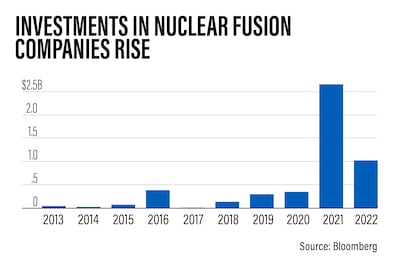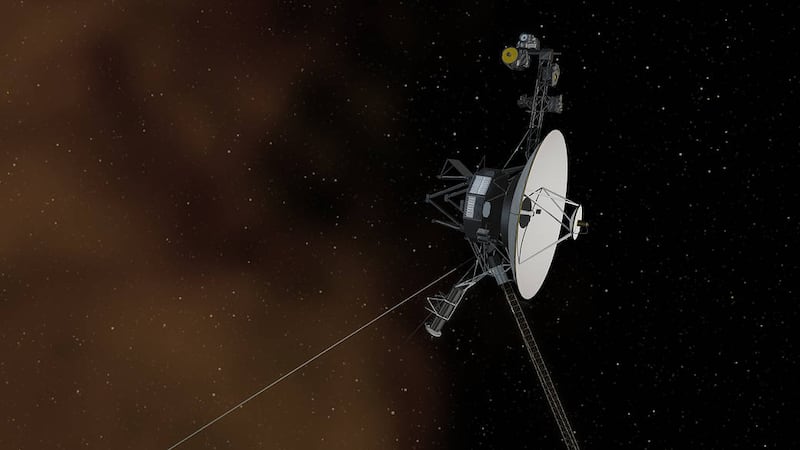Only two probes have reached interstellar space – the region beyond the solar system – since the start of human space exploration.
It took more than three decades for the first spacecraft, Voyager 1, to cross the heliopause, a boundary scientists believe is where interstellar space begins, after its launch in 1977.
It was an incredible achievement with invaluable data sent back through a medium not influenced by the Sun.
But with its power supply weakening it is almost impossible Voyager 1 will reach our nearest star, Proxima Centauri, which is 4.2 light years away and would take the probe almost 73,000 years.
Les Johnson, a Nasa scientist and author of several scientific and science fiction books, told The National reaching another star could take 50 to 100 years.
“It is possible we might have the technology to send our first robotic probe to another star within the next 50 to 100 years,” said Mr Johnson, who managed the Interstellar Propulsion Research Project at the US space agency.
“Based on the rate of technology growth, after looking at all the propulsion systems that are based on known physics, I believe these first probes will be propelled to the stars using laser light reflecting from a sail, similar to today’s solar sails but driven by intense laser light instead of sunlight.”
Human travel to interstellar space
It could take significantly longer for a crewed mission to travel to another star, as laser light sails would only work for smaller spacecraft.
Nuclear fusion propulsion, a way of powering a spacecraft using high-energy particles created by fusion reactions, is needed to make human missions to interstellar space possible.
“As for humans, that’s a lot more complicated because it takes a lot of mass to keep a group of humans alive for a decade- to centuries-long space journey and that means a massive ship,” Mr Johnson said.

“For a human crewed ship, we will need fusion propulsion at a minimum and antimatter as the ideal.
“While we know these are physically possible, the technology level needed for interstellar travel seems very far away – perhaps 100 to 200 years in the future.”
While scientists dream of antimatter propulsion, which could enable space travel at 70 per cent of the speed of light, nuclear fusion propulsion appears much closer to reality.
The technology could also help reduce the time it takes to reach Mars, the planet to which most space agencies are trying to send their astronauts.
Laura Forczyk, an author and the founder of space consulting firm Astralytical, said nuclear fusion propulsion has the potential to revolutionise space flight.
"We will not be able to achieve interstellar travel until we engineer a faster and more efficient means of accelerating," said Ms Forczyk.
"We also need to develop long-term, self-sustained robust ecosystems for long-duration voyages and a better means of radiation shielding. We are at least a century away from these advances."
While developing nuclear fusion technology is not easy, with the required temperature to achieve it 10 times hotter than the Sun, a few companies have been trying for many years.

California-based start-up Helicity Space recently received $5 million in seed funding to accelerate its fusion propulsion technology projects.
UK-based start-up Pulsar Fusion is also attempting to develop the technology and has started construction on a large nuclear fusion chamber in England.
When the engine is fired, it would, at least temporarily, be the hottest place in the solar system.
China is also trying to advance the development of nuclear fusion, with reports of a new state-owned company that would help accelerate the production of an "artificial Sun".
Is there an Earth-like planet beyond the solar system?
One of the reasons scientists want to explore interstellar space is to learn more about the universe and possibilities of life beyond Earth.
Nasa has been studying exoplanets, or planets outside of the solar system, for decades by using telescopes.
Mr Johnson said he "doubts we will find Earth 2.0 anywhere close" and that discovering another home-like planet was not thought to be a near-term possibility.
"Over time, we might be able to modify another planet to make it habitable but that will likely take additional centuries or millennia," he said.
"That doesn’t mean we shouldn’t go. The job of science is to learn more about the universe in which we live.
"Studying planets around other stars will help us better understand our own solar system and expand our knowledge of this big universe. That alone, in my opinion, makes the journey one we should make."







